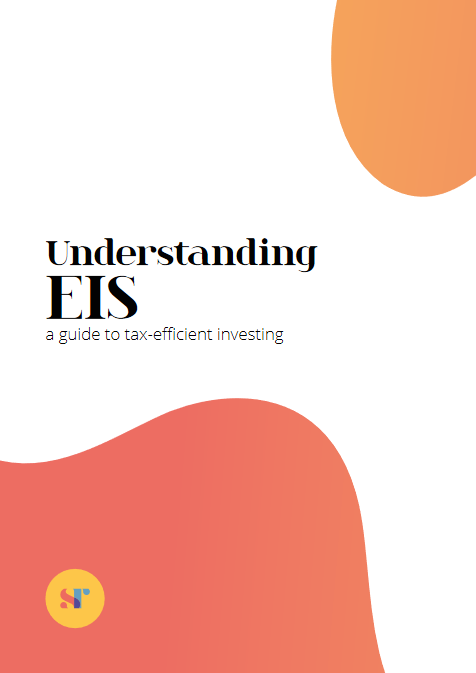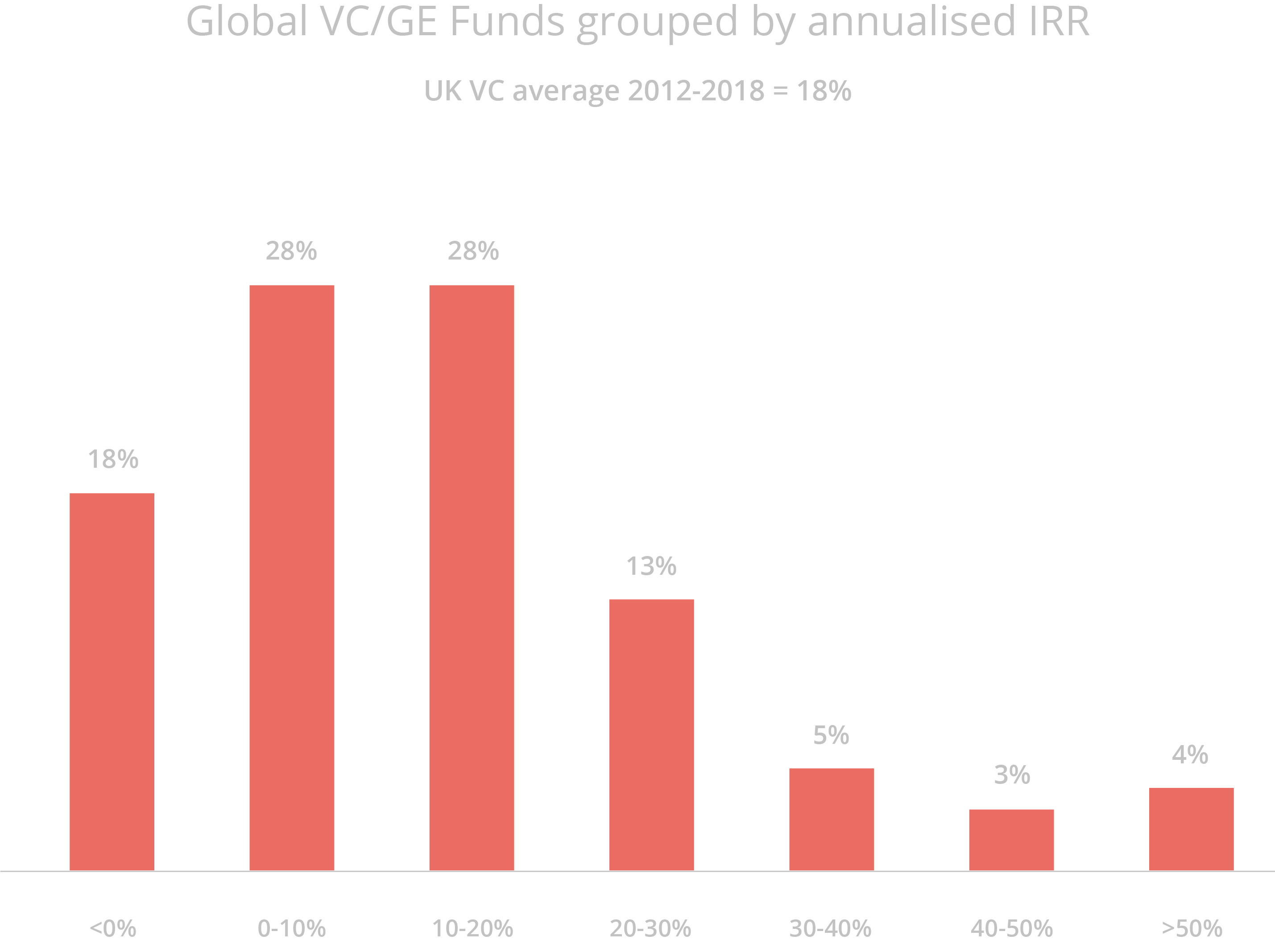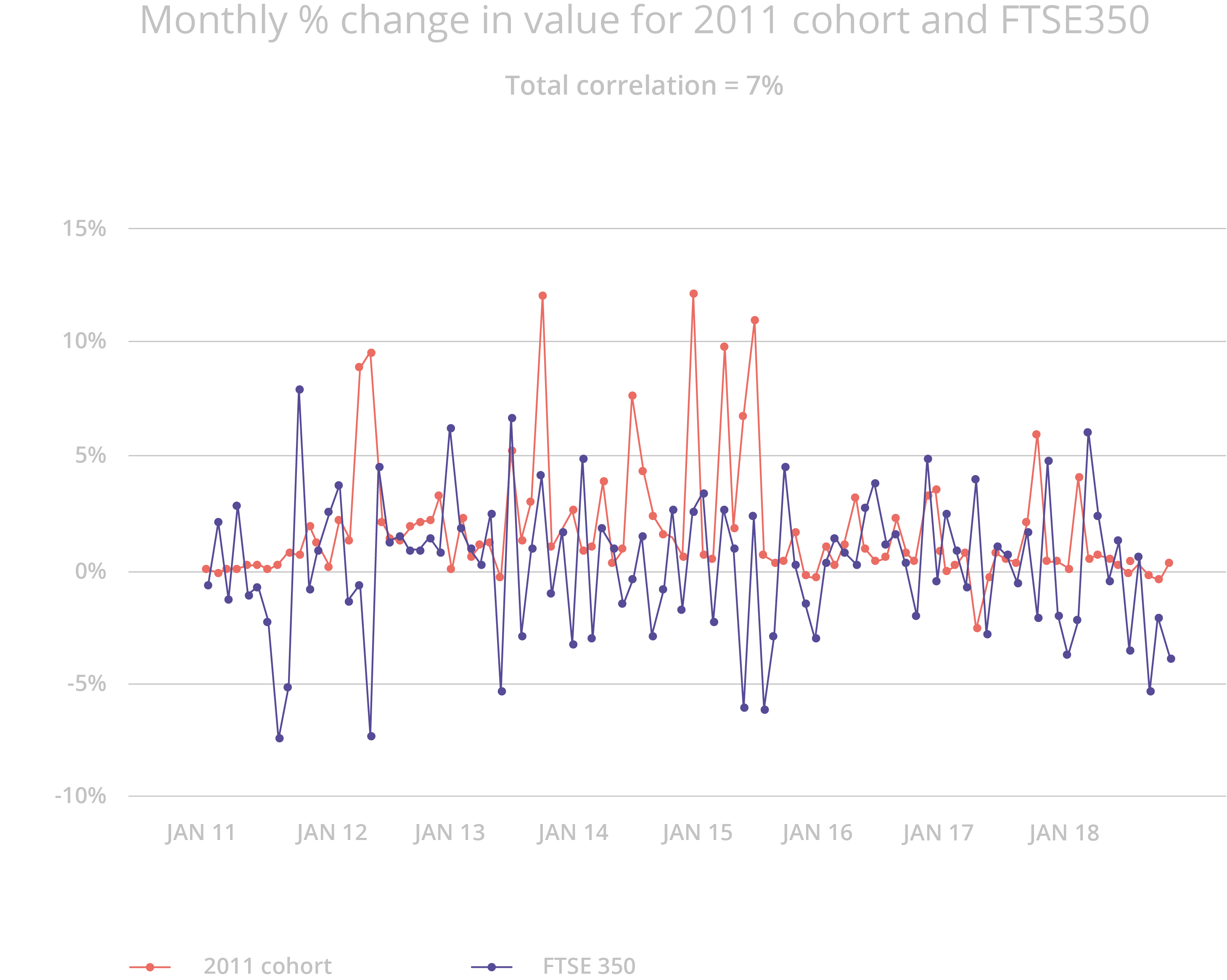Investing in venture capital was once the prerogative of the wealthy. More recently however, innovations in fund management technology and an increase in demand have led many venture capital firms to lower the entry ticket for their funds, opening the door to a much broader investor base. In fact, some venture funds have minimum investments as low as £5,000. In this article we’ll explore whether you should consider adding venture capital to your portfolio, what the advantages are, and what risks it carries.
The good: tax relief, deferrals, and benefits.
There are a number of funds in the UK that offer investors considerable tax advantages both on the way into the fund, and on the way out. Through the government's Enterprise Investment Scheme (EIS), eligible investors can receive a generous 30% income tax relief on the amount invested into a fund, as well as loss relief on the investments that fail, bringing most investors’ total investment exposure down to around just 30% of their initial investment. Therefore, on a £5,000 investment, once all tax reliefs are taken into consideration, an investor may only be at risk for around £1,500.
To further sweeten the deal, there are no capital gains to pay at exit on profits generated from shares held for a minimum of three years, and no inheritance tax is paid on shares held for a minimum of two years as EIS investments qualify for Business Investment Relief (BIR).
With reliefs like these, it’s no surprise that many investors have turned to EIS for retirement planning, following the significant reductions in pension tax relief of 2017.
Get your free guide to EIS

Want more information on EIS tax reliefs?
Download your copy of our free guide. Featuring an analysis of UK investor trends, investment case studies and an EIS cheat sheet.
Starting small.
The entry point for most venture capital funds remains in the tens or hundreds of thousands of pounds. However, there are exceptions, and some funds working on a more up-to-date model have recognised that a lower threshold of entry, and a larger, more diversified portfolio, can contribute to lower overall risk per investor and a higher rate of entry into the fund. One such fund is SyndicateRoom’s Access EIS fund.
The bad: what are the risks?
Venture capital is certainly a risky asset class to hold. Data from the British Venture Capital Association (BVCA) found that 48% of VC firms hit an IRR of less than 10%. What’s more, nearly 85% of firms underperform the average market return which stands at 28% IRR.

It should be noted that the traditional notion of venture capital funds creating portfolios of just ten companies to focus on fewer likely winners is flawed, and smaller portfolios actually raise the levels of risk significantly. Combined with a lack of liquidity and a ten years or greater holding period, one might question if the risk of including VC in your portfolio is worth the potential return.
The power of diversification.
There is hope and it rests in creating more diverse portfolios. Borrowing lessons from the public markets and modelling out historical returns based on portfolio sizing, it appears that creating a portfolio of 50+ companies can improve the likelihood of achieving the 28% IRR of the market considerably. So, while a £5,000 additional investment into your ISA may slowly grow to £8,000 (using a 5% compound growth rate) over a 10 year period, the same £5,000 investment into a fund hitting 28% IRR would net you several times that figure.
What’s more, data analysis comparing trends of public and private markets over the last 10 years has shown a low correlation between public and private market investments. Therefore, adding VC to a broader portfolio brings a new dimension of diversification that is not achievable through only holding publicly traded companies and funds that focus on listed markets.

Getting started with venture capital investing.
The best way to learn is by doing, and to this end, it’s worth looking at a few different venture capital funds, understanding their entry requirements and minimum investment, and making a few phone calls to get the information you need on which investment best suits your situation.
Data-driven venture capital: the Access EIS fund.
If you’re looking for a fund with a relatively low minimum investment (£5,000), a large portfolio of 50+ companies for each individual investor, all the tax relief options that come with EIS and an innovative investment model – it co-invests with expert angel investors with an average IRR nearly double that of the market – one option worth looking at is the Access EIS fund, operated by SyndicateRoom. It was recently ranked among the most active venture capital funds in London (Beauhurst, 2021), and is definitely worth a look if you’re exploring options for retirement planning and want to start with a modest outlay. They’re a very approachable team, who are happy to answer any queries you may have over the phone.
Register to learn
more about our data,
fund and venture capital

